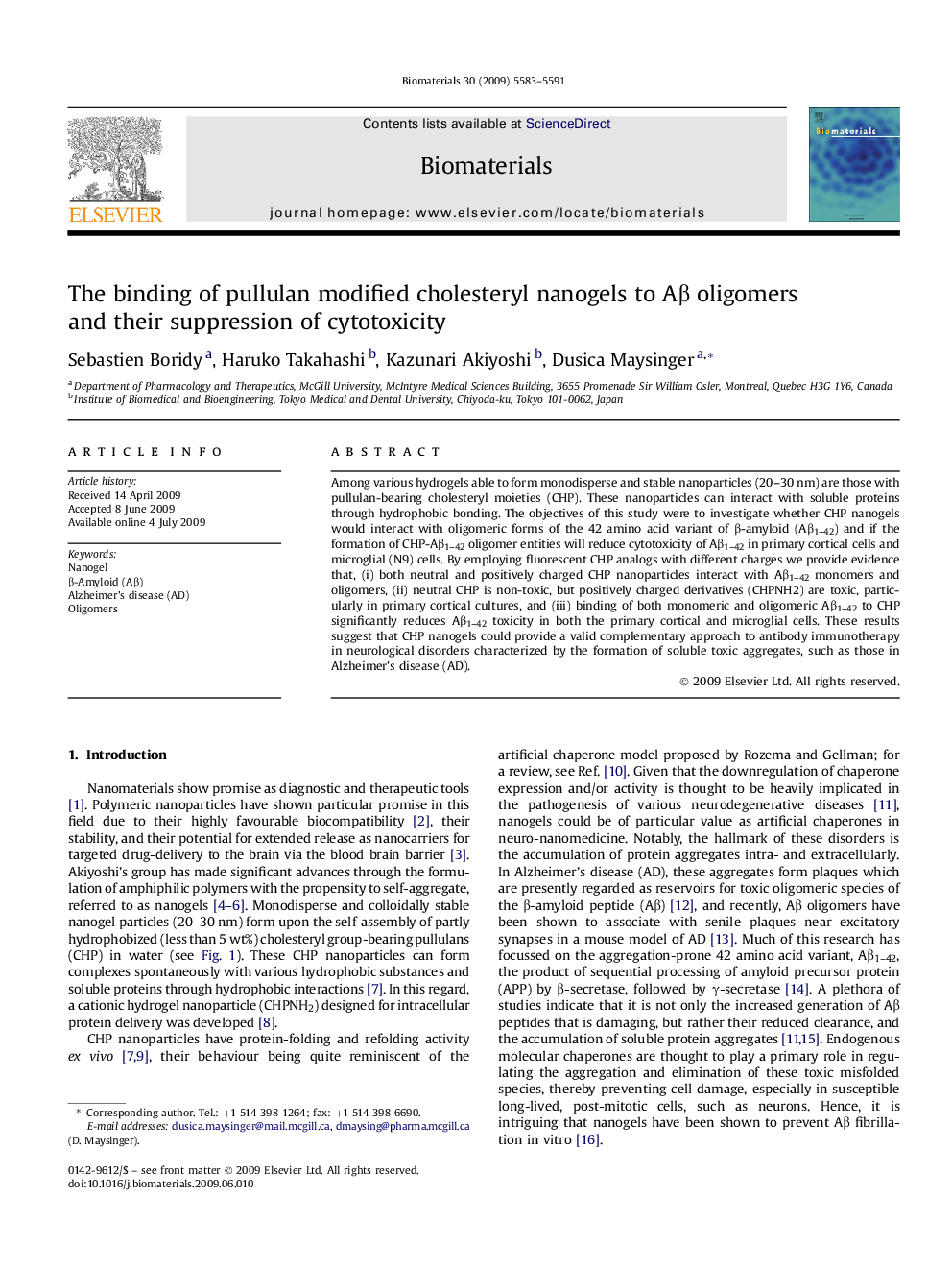| Article ID | Journal | Published Year | Pages | File Type |
|---|---|---|---|---|
| 8926 | Biomaterials | 2009 | 9 Pages |
Among various hydrogels able to form monodisperse and stable nanoparticles (20–30 nm) are those with pullulan-bearing cholesteryl moieties (CHP). These nanoparticles can interact with soluble proteins through hydrophobic bonding. The objectives of this study were to investigate whether CHP nanogels would interact with oligomeric forms of the 42 amino acid variant of β-amyloid (Aβ1–42) and if the formation of CHP-Aβ1–42 oligomer entities will reduce cytotoxicity of Aβ1–42 in primary cortical cells and microglial (N9) cells. By employing fluorescent CHP analogs with different charges we provide evidence that, (i) both neutral and positively charged CHP nanoparticles interact with Aβ1–42 monomers and oligomers, (ii) neutral CHP is non-toxic, but positively charged derivatives (CHPNH2) are toxic, particularly in primary cortical cultures, and (iii) binding of both monomeric and oligomeric Aβ1–42 to CHP significantly reduces Aβ1–42 toxicity in both the primary cortical and microglial cells. These results suggest that CHP nanogels could provide a valid complementary approach to antibody immunotherapy in neurological disorders characterized by the formation of soluble toxic aggregates, such as those in Alzheimer's disease (AD).
